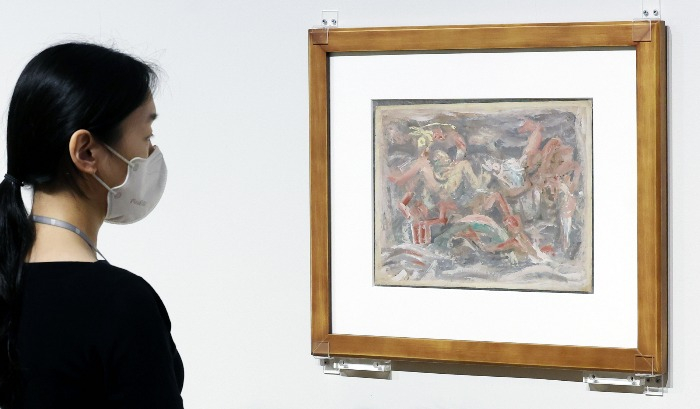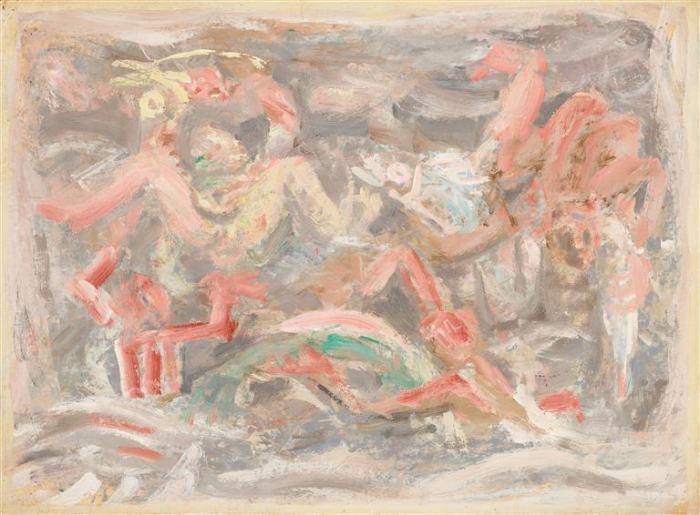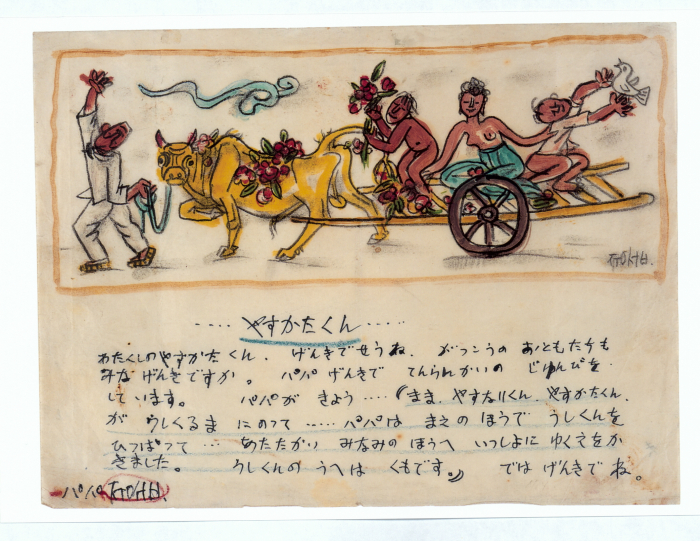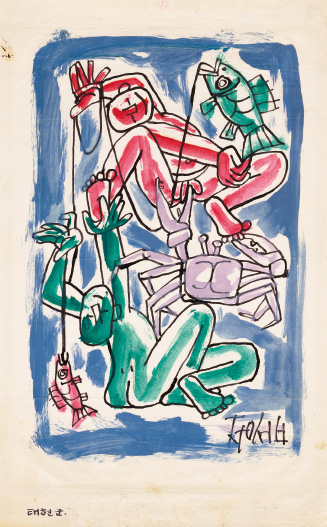Arts
Exhibition: Samsung heir’s donation of Lee Jung-seob works
Art historians describe the 1950s as Lee’s prime, although his personal life was in shambles during this period
By Aug 12, 2022 (Gmt+09:00)
3
Min read
Most Read
LG Chem to sell water filter business to Glenwood PE for $692 million


Kyobo Life poised to buy Japan’s SBI Group-owned savings bank


KT&G eyes overseas M&A after rejecting activist fund's offer


StockX in merger talks with Naver’s online reseller Kream


Mirae Asset to be named Korea Post’s core real estate fund operator



The late Samsung Group chairman Lee Kun-hee was an avid arts collector.
Though the business magnate did not mention names, it was easy to guess who his favorite South Korean artist was based on the size of the collection: Lee Jung-seob.
Following Lee Kun-hee’s death in 2020, his family donated 1,488 of the tycoon's works by Lee Jung-seob to the National Museum of Modern and Contemporary Art (MMCA).
Paintings and drawings by Lee Jung-seob accounted for 34 of the donated artworks. When including other forms of art, a total of 104 pieces created by Lee are on display at the exhibit.
Samsung’s Lee owned the artist’s most renowned piece "Bull" but he broadened his collection to include various types of memorabilia.
That is why commentators have quipped that a Lee Jung-seob exhibit is impossible without Samsung’s participation.
“Lee Kun-hee, who was particular even when it came to pieces by world-class artists, purchased a large quantity of Lee Jung-seob’s creations,” the MMCA's director Youn Bum-mo told The Korea Economic Daily.
SPECIAL EXHIBIT
The MMCA opened "Lee Kun-hee’s collection exhibition: Lee Jung-seob” on Friday, and will run it through April 23 next year.
The exhibition showcases some 90 pieces dating from the 1940s and 50s, as well as other creations of the artist.

The newly opened part two contains about 80 pieces from Lee’s collection, along with 10 works belonging to the museum.
Some of the artist’s oil paintings, most notably “White Ox” (1954), which is on a loan to the Los Angeles County Museum of Art, and “Bull” (1953), exhibited at the National Museum of Korea, are not part of the MMCA exhibition.
Born in 1916 to a well-to-do family in South Pyeongan Province, Lee Jung-seob led a privileged life during his childhood and teenage years.
In 1935, the 19-year-old went to Japan to study the arts. From 1940, he was in a relationship with his schoolmate Masako Yamamoto.

Rather than use written words, he conveyed his feelings through drawings, such as one of him putting ointment on Yamamoto’s injured leg (1941) and one depicting a paradise (1941).
In 1943, as the Pacific War intensified, Lee returned home to Korea.
His pencil sketches such as “Boy” (1942-1945) date from this period.
A year after returning to Korea, Lee brought Yamamoto to Wonsan, Korea, for a traditional wedding ceremony.
PALPABLE LONGING
Art historians describe the 1950s as Lee’s prime.
Ironically, his private life was in shambles during this time, beginning with the North Korean communist regime’s execution of his older brother for owning a department store in Wonsan.
As the Korean War broke out, Lee and his wife sought refuge in the southern port city of Busan.
The death of his entrepreneur brother forced Lee, who never had to worry about supporting himself, to think about the family’s livelihood.
In 1951, the Lee family moved to Jeju Island and lived off the crabs and clams they collected on their own. Despite the hardships, the artist is known to have cherished this period of his life until his last breath.

The halcyon days lasted only 11 months as Lee had to send his wife and children to Japan for his father-in-law’s funeral the following year.
“Chicken and Chicks” and “Children Playing in the Water” were both made in the early 1950s and are being unveiled to the public for the first time.
The two paintings represented a recollection of his joyful days on the island.
Tinfoil drawings, in contrast, are said to symbolize his time of tribulation approaching his death.
Lee used steel nails to draw on the tinfoil from his cigarette packs and used water paint or ink to paint over the drawings.
Besides painting, the artist spent his final years doing manual work to support his family.
Such deprivations are believed to have contributed to Lee's afflictions with jaundice and mental illness. He died in 1956 at the age of 40.
Write to Soo-Young Seong at syoung@hankyung.com
Jee Abbey Lee edited this article.
More to Read
Comment 0
LOG IN



